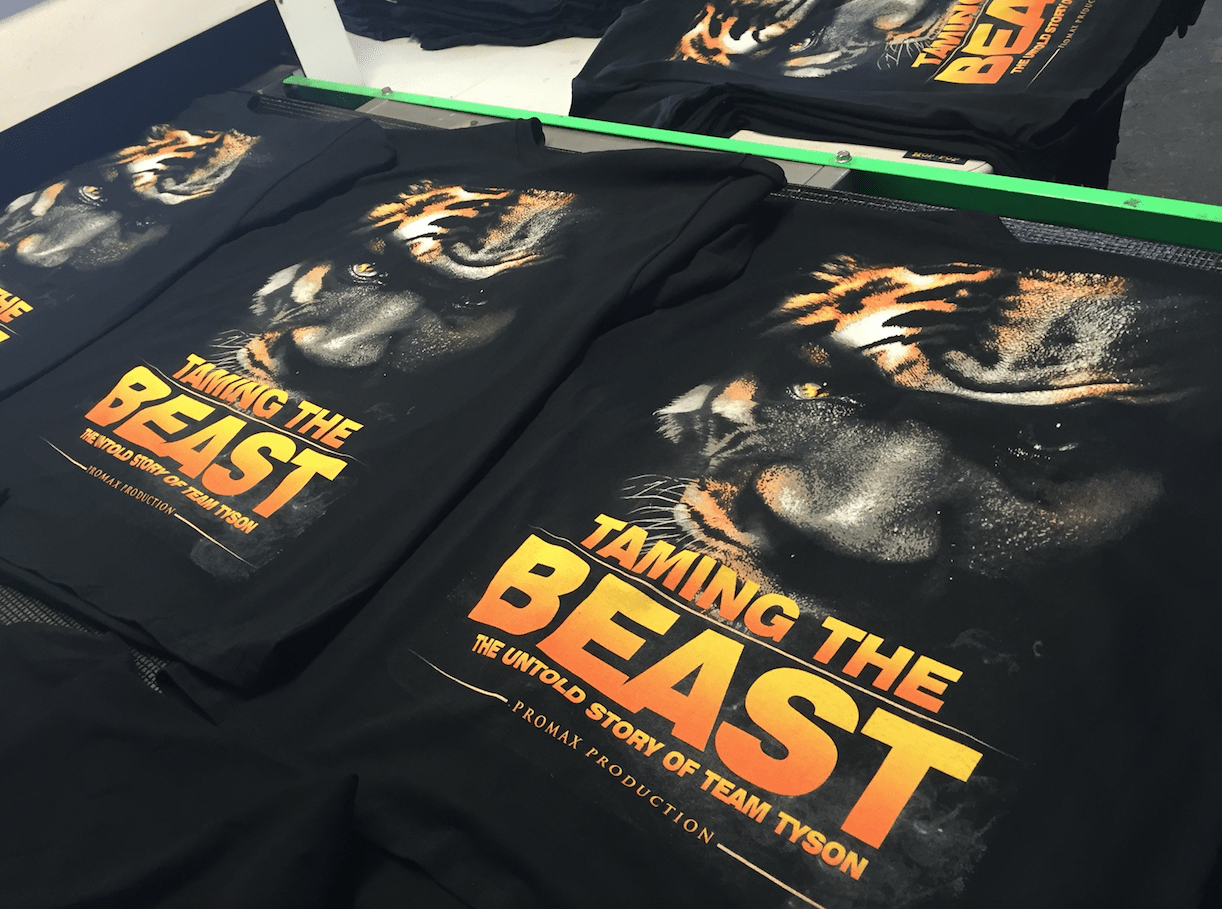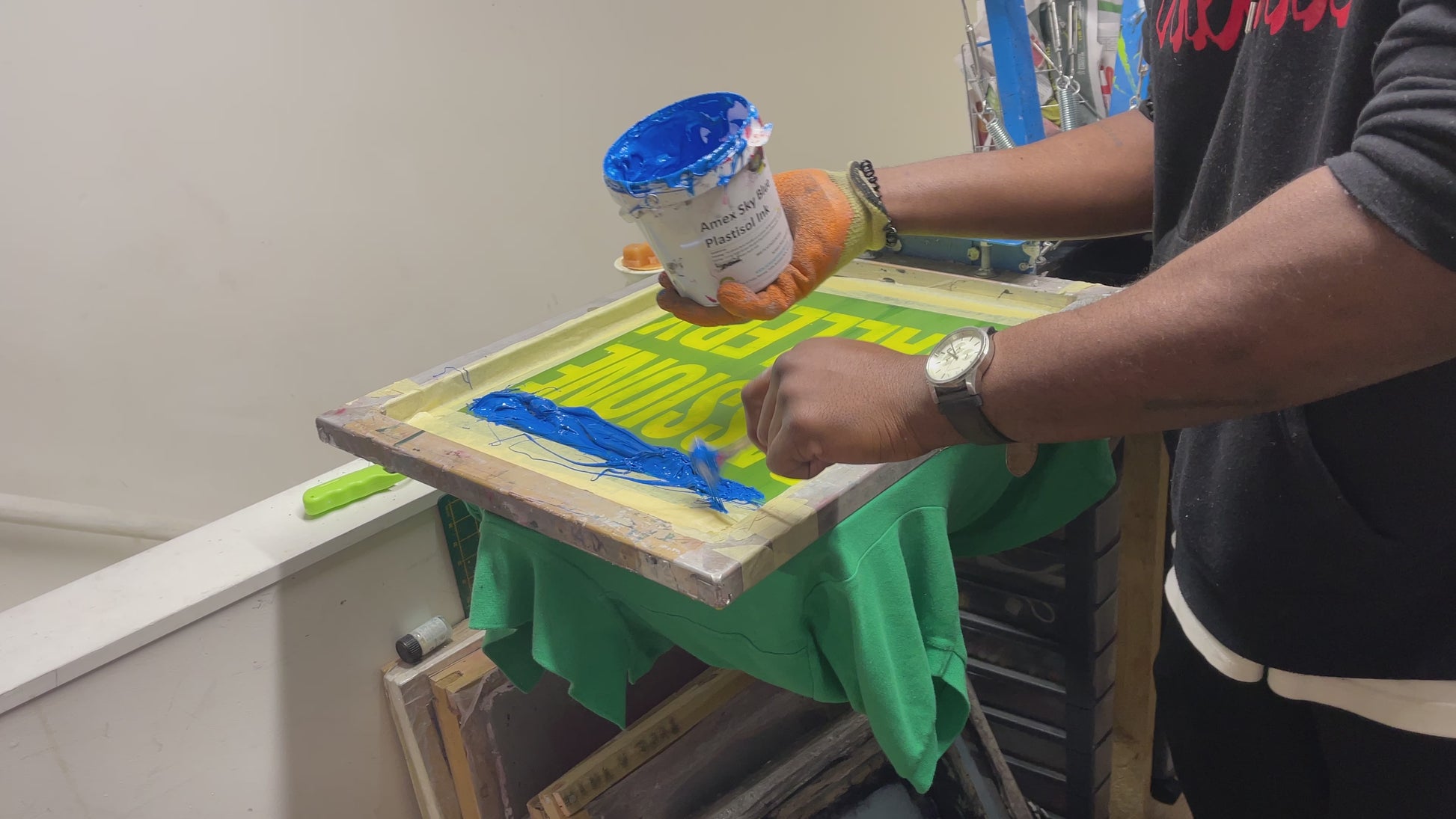Vintage Style Silk Screen Printing for Retro Fashion
Vintage Style Silk Screen Printing for Retro Fashion
Blog Article
Display Printing Uncovered: Whatever You Required to Understand About Tee and Garment Printing Methods
Screen printing is a remarkable technique that integrates art with technique, using endless possibilities for creative thinking. All set to explore the crucial aspects that make display printing an art type?
The Essentials of Screen Printing: Just How It Works
When you dive into screen printing, you'll uncover it's both a science and an art. At its core, display printing involves developing a stencil, or display, that enables ink to pass via just in particular locations.
Position the display over the textile, after that use a squeegee to press ink with the display onto the garment. Each step is important, and mastering them will certainly boost your screen printing abilities, changing basic garments into one-of-a-kind, expressive pieces.
Types of Screen Printing Strategies
As soon as you comprehend the basics of screen printing, it's time to check out the different strategies that can raise your designs. One popular approach is conventional display printing, where ink is pressed through a stenciled display. This method is excellent for bold, vivid shades. Then there's water-based ink printing, which uses a softer feel and is environment-friendly, however it calls for a various method to healing.
If you're aiming for fine details, consider discharge printing. This technique eliminates color from the textile, leaving a soft, vintage look. One more option is plastisol printing, recognized for its durability and vivid colors, making it a favored for lots of brand names. Ultimately, experiment with halftone printing to create gradient impacts and detailed layouts. Each method has its distinct appeal, so don't wait to attempt them bent on locate what fits your design best!
Crucial Equipment for Screen Printing
To attain stunning outcomes in screen printing, having the right equipment is essential. You'll require a strong screen printing framework, which holds the mesh that transfers your design onto the garment. Next, spend in top quality mops; these are essential for using ink equally across the screen.
Selecting the Right Inks and Materials
When choosing inks and products for display printing, you require to take into account the kind of ink that works finest for your job. Think of material compatibility to ensure your designs look last and great long. Also, discover environmentally friendly ink options to make your printing procedure more sustainable.
Kinds of Display Inks
Choosing the ideal screen ink is important for achieving dynamic, long lasting prints that meet your project's requirements. There are a number of types of screen inks to take a look at. Specialized inks, such as glow-in-the-dark or metal, can add distinct effects to your layouts.

Textile Compatibility Factors To Consider
Recognizing material compatibility is important for achieving high-quality screen prints, specifically since various products respond uniquely to various inks. Constantly evaluate your inks on example fabric to assure they adhere correctly and keep shade honesty. In addition, keep in mind that fabric weight and structure can affect the final result, so selecting the best ink and product combination is vital for your task's success.
Eco-Friendly Ink Options
Green inks are becoming a preferred selection for screen printers that desire to decrease their environmental influence while keeping quality. When picking inks, consider water-based inks, which are much less unsafe and much easier to cleanse up compared to standard solvents.
Furthermore, seek inks made from renewable energies, such as soy or vegetable-based choices. By picking the ideal inks and materials, you'll not only create stunning layouts yet likewise add to an extra sustainable printing process. Make the button, and your prints will certainly reflect your dedication to the setting!
Preparing Your Layout for Display Printing

File Style Requirements
To ensure your layout looks vivid and sharp on material, you'll need to pay close focus to file format needs for display printing. Begin with vector documents like AI or EPS, as they can be scaled without shedding quality. If you make use of raster images, choose high-resolution documents, such as TIFF or PNG, ideally at 300 DPI. Stay clear of making use of JPEGs, as they can shed quality when resized. Likewise, ensure your design has a transparent background to stop unwanted white sides on your prints. Maintain color settings in mind; CMYK is typical for display printing, so transform your RGB makes as necessary - screen printing kit. By following these standards, you'll set your art work up for a successful print.
Shade Splitting Up Methods
Shade splitting up is a vital step in preparing your layout for display printing, and mastering it can significantly enhance your print quality. You'll need to break your design into private colors, as each shade requires a different display throughout printing. This precision not only ensures exact shade depiction but additionally improves the printing procedure.
Resolution and Dimension
Achieving the ideal lead to screen printing starts with assuring your layout has the right resolution and dimension. Preferably, your artwork ought to be at the very least 300 DPI (dots per inch) for sharp, clear prints. If you utilize reduced resolution, your end product might look less than professional and pixelated.
When it comes to size, consider the measurements of your print location. Layout your artwork to match the final print dimension, preferably developing it in the real measurements you'll be publishing. In this manner, you'll avoid any type of unforeseen scaling issues.
Always inspect your style in both vector and raster layouts. Vector graphics can be scaled without losing top quality, making them ideal for display Home Page printing. Preparing appropriately will ensure your style looks remarkable on every garment!
Step-by-Step Screen Printing Refine
Screen printing is a vibrant process that permits you to produce dynamic layouts on various surface areas. To obtain started, you'll require a screen, emulsion, and your selected ink.
Put ink onto the display and utilize a squeegee to push the ink with the pattern onto the fabric. Lift the display very carefully and allow the print completely dry. You've successfully display published your design.
Tips for Successful Display Printing Projects
While you're diving right into your display printing projects, keep in mind that preparation is key to success. Begin by collecting all your materials-- inks, squeegees, displays, and garments. A clean work area aids prevent unwanted errors, so clean prior to you start.
Next, verify your artwork is high-resolution and properly sized for your garment. Examine your display for proper direct exposure and clean it extensively to avoid smudges. When mixing your inks, follow the producer's guidelines to attain the right uniformity.
Throughout printing, use also pressure with your squeegee for consistent outcomes. Do not hurry; take your time to validate each print fulfills your criteria. After printing, let your garments dry totally before dealing with or packaging them.
Last but not least, constantly keep an example of your benefit future recommendation. By doing this, you can examine your progress and boost your strategies over time. Happy printing!

Often Asked Inquiries
For how long Does It Require To Establish up a Display Printing Job?
Setting up a display printing work commonly takes about thirty minutes to an hour. You'll prepare the displays, mix inks, and change the press. The moment varies based upon complexity and experience, so remain organized!
Can I Publish on Different Material Types Utilizing the Very Same Strategy?
Yes, you can publish on different fabric kinds making use of the exact same technique, yet you'll need to readjust your settings and inks. Some fabrics absorb ink in different ways, so exploring guarantees the most effective results for every product.
What Are Usual Mistakes to Avoid in Display Printing?
When display printing, prevent common blunders like making use of the incorrect ink, disregarding correct direct exposure times, or skipping pre-press checks. Constantly examine your arrangement and preserve tidy displays to assure high quality outcomes each time.
Just How Can I Correctly Clean and Maintain My Screen Printing Devices?
To correctly tidy and keep your screen printing tools, you must frequently clean screens with proper solvents, examine mops for wear, and assure all devices are stored dry and dust-free. Uniformity enhances and protects against expensive repairs efficiency.
Is Display Printing Ecologically Pleasant Contrasted to Other Approaches?
Screen printing can be a lot more environmentally pleasant than various other approaches, particularly if you utilize eco-conscious materials and water-based inks. By picking lasting supplies and techniques, you minimize waste and minimize your impact on the planet.
Screen Printing Uncovered: Everything You Need to Know About Tee and check out here Garment Printing Strategies
At its core, screen printing involves creating a pattern, or screen, that permits ink to pass through just in certain areas. Position the screen over the fabric, then make use of a squeegee to push ink via the display onto the garment. One preferred approach is standard display printing, where ink is pressed through a stenciled display.When choosing inks and products for screen printing, you require to take into account my company the kind of ink that functions finest for your task.
Report this page